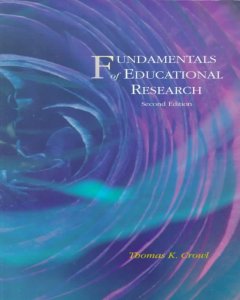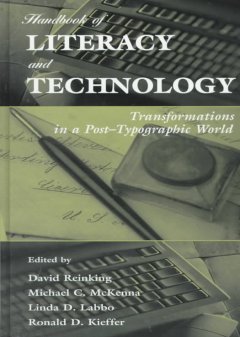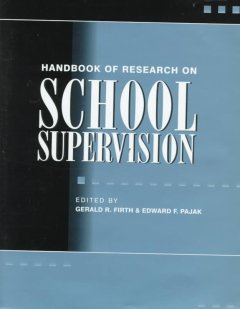We are moving things around in the Education Library in order to update the study areas. The Reference Collection on the main floor will be compressed to fit on the shelves in the north wall, behind the computer stations, and the microfiche reader printer will be on the main floor. The Reference Collection will focus on materials published after 2000. The older Reference items will be sent to the book stacks, and anyone will be able to check them out for personal interest, or a research project. Here are a few of the titles we have to offer:

Fundamentals of Educational Research, 2nd edition. Thomas K. Crowl. McGraw Hill, 1996. Education Library: LB1028 .C77 1996x
According to the publisher’s review “Excellent writing and excerpts from current research articles enhance this book’s comprehensive look at the fundamental concepts of educational research and facilitate student understanding.” Some details are out of date, such as how to do an ERIC search on CD Rom. The basics on considerations in designing research still apply, but the chapter “The cutting edge, using technology in
educational research” does not.

Handbook of Literacy and Technology:
Transformations in a Post-Typographic World. Edited by David Reinking, et.al. Lawrence Erlbaum Associates, 1998. Education Library: LB1050.37. H36 1998.
The introduction states, “A printed book about electronic reading and writing is not a contradiction, but a testimony to the fact that we are in the midst of a transformation that is not yet fully consummated.” The authors in 1998 could not have known how far we have come with the World Wide Web, online articles and e-books. It looks like they hit the mark. The book is also available as an e-book.

Handbook of Research on School Supervision. edited by Gerald R. Firth, Edward F. Pajak. Macmillan, Library Reference, c1998. Education Library: LB 2806.4 H 36 1998.
This book traces its lineage to the Handbook of Research on Teaching, edited by Nathaniel Gage in 1963. Its purpose is to assemble the major scholarship and research of the field in a single volume; identifying the boundaries, concepts, and methods of inquiry in the field of research on school supervision. As in most research reviews, each chapter offers an historical overview. These are still useful; one has to keep the publication date in mind.
 International Encyclopedia of Teaching and Teacher Education, 2nd edition Edited by Lorin W. Anderson, Pergamon, 1995. Education Library: LB 1025.3 I58 1995.
International Encyclopedia of Teaching and Teacher Education, 2nd edition Edited by Lorin W. Anderson, Pergamon, 1995. Education Library: LB 1025.3 I58 1995.
This volume is intended for those who wish to obtain an overview of a specific area of education in a relatively short period of time. Members of this audience include graduate students, university professors working outside of their area of expertise, or elementary and secondary teachers searching for a body of knowledge to inform, guide and/or justify their teaching practices. Computerized databases are more extensive and more readily accessed, but the encyclopedia’s
review articles are more selective, and their research summaries are set in aframework decided by distinguished contributors, all experts in their field. This is their strength, and also the source for their potential weakness. Examples of entries include: Teachers as Researchers,by S. Hollingsworth Class Size, by J.D. Finn.
Cover photo from Amazon.com Click to look inside.



